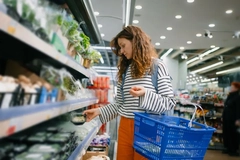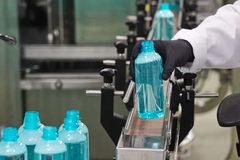Giunko highlights packaging waste disposal app Junker ahead of EU labeling reforms

08 Jun 2022 --- Italian packaging disposal specialist Giunko is touting its digital environmental labeling system ahead of this summer’s expected legislative developments in the EU, which will likely lead to requirements for producers to provide consumers with labeling that conveys products’ environmental impacts.
Six years ago, Giunko created a cloud-based solution that links product barcodes to a unique database of information on waste sorting. This database became the “brain” of the Junker app – a platform for waste sorting and recycling, which now counts more than 2 million users in Italy.
Last year, Giunko launched its Digital Environmental Label (EAD), which conveys all disposal information through a product’s barcode. By taking the smartphone and scanning the barcode with Junker app, consumers can immediately find out more about the environmental sustainability of the items they are buying and find out how to dispose of their packaging properly.
Each product sheet includes information on: the packaging’s components and the materials it is made of, including nationally recognized abbreviations and acronyms for materials; geolocated disposal information to sort waste correctly, according to territorial rules for the municipality; additional sustainability information.
 Consumers can use the Junker app to identify correct packaging disposal methods wherever they are.Getting ahead of legislation
Consumers can use the Junker app to identify correct packaging disposal methods wherever they are.Getting ahead of legislation
Giunko says the EAD was the “first of its kind” and that the company foresaw EU moves on circular transition and waste reduction. The forthcoming revision of the EU’s Packaging and Packaging Waste Directive will likely make all packaging placed on the EU market fully recyclable by 2030. In the same period, the European Commission (EC) is going to publish the Sustainable Product Initiative (SPI).
This initiative, which will immediately come into effect, presents significant challenges for producers.vTo drive consumers toward more environmentally sustainable choices declares the EC, “labels should provide information allowing for the effective comparison of products.”
To reach this goal, the EC also recommends introducing physical labels, where appropriate, additional information by bearing specific references like website addresses, dynamic QR codes, links to online labels or any appropriate consumer-oriented means. It’s a green light to the use of enabling technology in this field, and its first effect will be a turn to digital labeling in all European countries.
In Italy, environmental labeling will become mandatory from January 1 next year.
Getting the EAD
There are several options to get EAD: simply by scanning the product’s barcode with Junker app, using an assigned and dynamic QR code, or embedding all the information within the client’s website. Several companies in different sectors – mainly wine, tobacco, cosmetics, and luxury have already joined the EAD by Junker app.  New EU rules are requiring packagers to convey environmental information on labeling.
New EU rules are requiring packagers to convey environmental information on labeling.
“We’ve been pioneers in this field,” says Noemi De Santis, CMO of Giunko.
“Now, thanks to our experience, we’re able to offer producers, suppliers and importers a full solution to go well beyond the law requirements and effortlessly undertake the path toward innovation and sustainability, which the EU is encouraging.”
“In fact, our Digital Environmental Label gives much more information than a traditional label, but at the same time is always up-to-date and very helpful. We don’t just offer to our clients the most developed and reliable waste sorting platform, but we also help them provide verified contents about the sustainability and recyclability of their products.”
Inclusive labeling
The digital label by Junker app is also accessible for blind and visually impaired people and is available in ten languages. Many international companies are implementing the innovation, for this reason, claims Giunko. Among them is Bolsius, a European player in the field of scented candles.
“For Bolsius Italy, EAD by Junker app represents a unique and remarkable simplification of the process to be compliant with the new environmental norms,” states a company spokesperson.
“Many of our products are quite small and have multilingual packaging. Such characteristics can be an obstacle to the adaptation of the label to the new law requirements: a digital label is, for us, the perfect solution. With a single, small environmental label, which is the same for all products, we can convey all disposal information to the consumers.”
By Louis Gore-Langton











